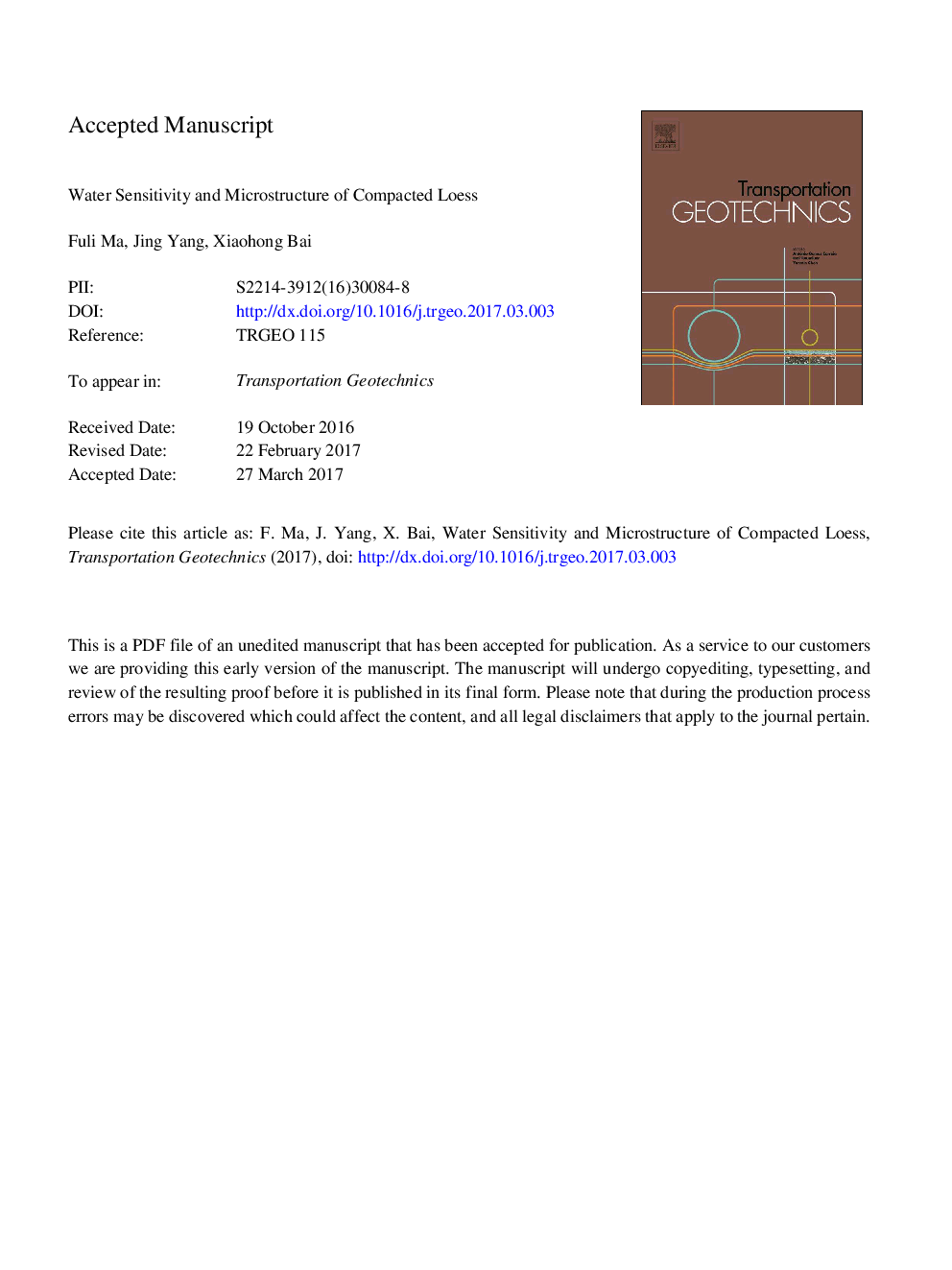| Article ID | Journal | Published Year | Pages | File Type |
|---|---|---|---|---|
| 4928781 | Transportation Geotechnics | 2017 | 42 Pages |
Abstract
Loess is abundant around the world, and China has the most extensive and thickest distribution of loess, which is currently widely used as subgrade or subbase of roads after ground improvement by compacting. This paper presents a study to investigate the effects of compaction parameters (compaction energy and water content) on the bearing capacity and microstructure of compacted loess. The bearing ratio, mineralogy, microstructure of loess compacted with different compaction water contents and energies were characterized by California bearing ratio testing, X-ray diffraction, scanning electron microscopy to elucidate the origin of water sensitivity. A total of 72 samples were compacted with different compaction energies and water contents, on the dry side of optimum, at optimum and on the wet side of optimum, using the Proctor procedure for soaked and un-soaked CBR testing. The compacted samples exhibit expansibility and strength loss (decreasing of CBR values) when soaked in water. For a given compaction energy, the samples compacted on dry side of optimum have higher strength and bearing capacity in terms of unsoaked CBR value, but have higher expansion and more strength loss when soaked in water. From the microstructural point of view, the microstructure characteristics like pore size and shape, porosity, particle contact and association change with the compaction water content and energy. The results show that the water sensitivity is strongly related to the mineralogy and microstructure of the compacted loess. For the Engineering implications in transportation construction, compaction at a very low water content should be avoided for the water sensitivity and metastable structure of dry compacted samples.
Related Topics
Physical Sciences and Engineering
Earth and Planetary Sciences
Geotechnical Engineering and Engineering Geology
Authors
Fuli Ma, Jing Yang, Xiaohong Bai,
